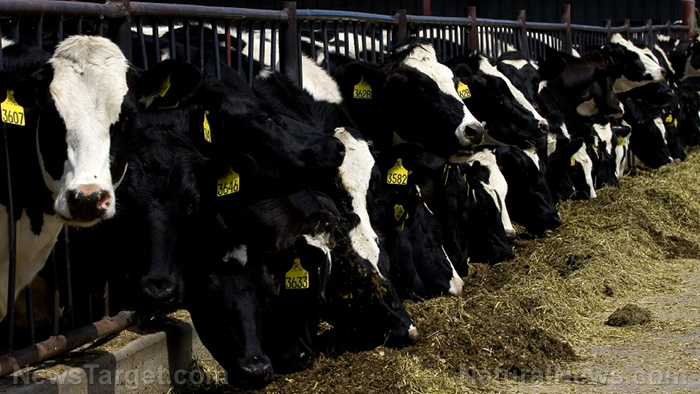Chemicals from CAR TIRES could be contaminating your dinner plate foods
05/10/2023 / By Ethan Huff

Increasingly more vegetables and fruits are becoming contaminated with toxins from vehicle-related pollution such as car tire pieces and residues, a new study out of Austria has found.
Researchers out of Vienna warn that particulates from cars get left behind on roads and blown about and moved around by winds and rain, eventually settling in the soils where food is grown.
Farms that utilize wastewater and sewage sludge, also known as “biosludge,” as “fertilizers” are also heavily contaminated with all sorts of contaminants, many of which end up inside the portions of plants consumed by animals and people.
On average, according to the team from the University of Vienna, a person unknowingly consumes and leaves behind as waste some 2.2 pounds, or around one kilogram, of toxic particles every single year.
“Tire wear particles contain a number of organic chemicals, some of which are highly toxic,” said Anya Sherman, a PhD student at the Centre for Microbiology and Environmental Systems Science (CMESS) at the school, and first co-author of the study.
In a university release, Thilo Hofmann, who headed up Sherman’s research group, added that if these chemicals are being released in the root zone vicinity of edible plants, “they can pose a health concern for consumers – provided the chemicals are taken up by the plants.”
(Related: If we don’t save the soils, civilization will collapse.)
Lettuce plants found to uptake tire chemicals and even produce their own new ones
Thankfully, many plants contain built-in barriers to chemical uptake – at least the ones that are still in their natural form. The same cannot be said of genetically modified organisms (GMOs) and other altered plants.
Then there are all the synthetic, and oftentimes nanoparticle-sized, contaminants that are designed to bypass these built-in barriers, which pose an additional threat to consumers.
For their research, scientists added five chemicals to a lettuce plant, four of which are used in tire production – though not all of them have a proven history of being harmful. The fifth chemical, known as 6PPD-quinone, is, in fact, toxic.
While not used as part of the tire production process, 6PPD-quinone is a byproduct of new tire production. And as drivers drive and the chemical gets released, it ends up in soils where food is grown, or in water where it kills salmon and other fish species.
“Our measurements showed that the lettuce plants took up all the compounds we investigated through their roots, translocated them into the lettuce leaves, and accumulated them there,” Sherman reported.
Even lettuce plants that were not directly exposed to these chemicals, but instead were exposed indirectly via tire residue, were found to uptake them into their edible structures.
“The lettuce plants continuously take up the potentially harmful chemicals that are released from the tire abrasion particles over the long term,” Hoffman reported.
Even worse is the fact that when lettuce plants interacted with some of the toxic compounds, they were found to create their own new chemicals that scientists do not even know the toxicity of since they are, in a sense, new.
“The plants processed the substances and, in doing so, produced compounds that have not been described before,” added Thorsten Hüffer, a senior scientist at CMESS. “Since we don’t know the toxicity of these metabolites, they pose a health risk that cannot be assessed so far.”
“The processes we have investigated probably take place differently in soil systems,” added co-author Ruoting Peng. “In a next step, we are therefore looking at the possible uptake of tire additives by plant roots in natural soils.”
To learn more about the importance of eating clean food from healthy soils, visit CleanFoodWatch.com.
Sources for this article include:
Submit a correction >>
Tagged Under:
agriculture, car tires, chemicals, clean food watch, crops, Ecology, environment, food science, food supply, frankenfood, grocery, harvest, organics, Plants, poison, real investigations, research, stop eating poison, toxins, veggie
This article may contain statements that reflect the opinion of the author
RECENT NEWS & ARTICLES
CleanFoodWatch.com is a fact-based public education website published by Clean Food Watch Features, LLC.
All content copyright © 2018 by Clean Food Watch Features, LLC.
Contact Us with Tips or Corrections
All trademarks, registered trademarks and servicemarks mentioned on this site are the property of their respective owners.




















